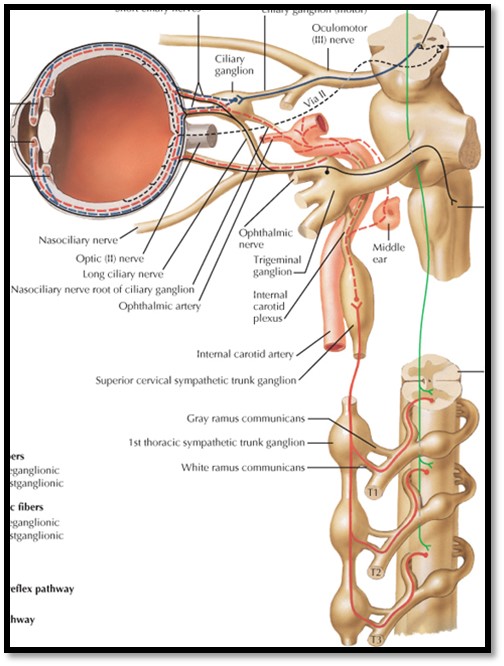- Welcome
- Topic 1: Background of Ocular Sympathetics
- Topic 2: Elements of the Case History
- Topic 3: Clinical Tests
- Topic 4: Confirmatory and Diagnostic Tests
- Topic 5: Patient Education
- Topic 6: Treatment and Referral
- Conclusion
- HELP

Third-Order Neuron leaves ICA to go to iris dilator muscles, and muscles of Müller.

Third-Order Neuron (cell body in SCG) travels along internal carotid artery (ICA).

Second-Order Neuron ends in superior cervical ganglion (SCG).

Second-Order Neuron enters sympathetic chain via white ramus.

Second-Order Neuron. Cell bodies in intermediate horn of C8-T2.

First-Order Neuron. Cell bodies in hypothalamus.
Topic 1: Background of Ocular Sympathetics
Introduction and Objective
After completing this unit, you will be able to:
- Recall the organization of the sympathetic supply to the eye, focusing upon its three parts, with 100% accuracy
Estimated time of completion: 5 minutes.
Horner’s Syndrome (oculosympathetic paresis)
Any interruption of the sympathetic supply to the eye results in a Horner’s syndrome (oculosympathetic paresis).
Horner’s syndrome can be caused by interruptions of any of the three orders of neurons in the sympathetic pathway.
Organization
To learn more about the organization of the Sympathetic Nervous System, try rolling over each of the numbered labels in the diagram.

Page 2 of 25 | E-mail | Back to Top